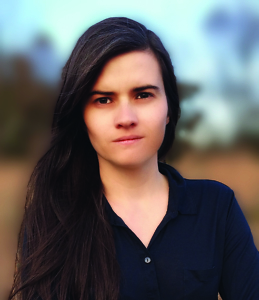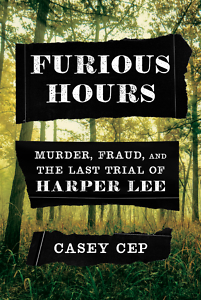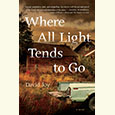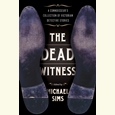In Colder Blood
Casey Cep’s Furious Hours tells the true story of Harper Lee’s plan to out-Capote her old friend Truman Capote
In 2015 the publishing world reeled when HarperCollins announced that it was publishing Harper Lee’s Go Set a Watchman, the sequel to her iconic To Kill A Mockingbird. Journalist Casey Cep traveled to Alabama to cover the launch of Watchman but came away with something more tantalizing: evidence of a third project by Harper Lee, a true-crime account of interconnected deaths in the 1970s.

Furious Hours, Cep’s ravishing debut, recounts the homicidal spree of Reverend Willie Maxwell, a lay preacher and jack-of-all-trades, who lived with his wife, Mary Lou, outside Alexander City, Alabama. Maxwell, a target of law enforcement, was nevertheless able to move freely until he was finally gunned down in 1977. Cep structures her tale around her three leading characters: the scheming Reverend; Tom Radney, the charismatic lawyer who represented both Maxwell and his killer; and Lee, who returned from New York to her native state to follow the case.
After Mary Lou was found dead in a car pushed off a lonesome two-lane road, Maxwell filed insurance claims as her sole beneficiary, a pattern that was later chillingly repeated with his second wife and with four other associates. Radney, a white progressive in a conservative state, successfully defended Maxwell, who was black, in court. The police investigation had yielded no hard proof to connect the Reverend to the mysterious deaths, but virtually everyone across three counties feared him. Then another African American man, Robert Burns, took the law into his own hands and shot Maxwell at his stepdaughter’s funeral. Word of the bizarre case rode a tail wind into Manhattan, catching the ear of Lee, who hastened south.
 Cep is a stunningly assured and agile writer, guiding her narrative forward even as she detours into delicious backstories and sidebars. Prominent is Lee’s role as Girl Friday to childhood friend Truman Capote (the real-life model for Dill in Mockingbird) as he researched and wrote his masterpiece, In Cold Blood. Lee had accompanied Capote on fact-finding trips to Holcomb, Kansas, site of the massacre, where she befriended the locals, smoothed Capote’s arrogant edges, sketched diagrams of the crime scene, and typed up notes. Cep evokes the push-pull of the Capote-Lee relationship, especially its competitive slant: “While she paid to sit through lectures and fret over exams, people were paying Capote for every word that he wrote. He was a peacock strutting about the globe; she was a pigeon pacing the roost.”
Cep is a stunningly assured and agile writer, guiding her narrative forward even as she detours into delicious backstories and sidebars. Prominent is Lee’s role as Girl Friday to childhood friend Truman Capote (the real-life model for Dill in Mockingbird) as he researched and wrote his masterpiece, In Cold Blood. Lee had accompanied Capote on fact-finding trips to Holcomb, Kansas, site of the massacre, where she befriended the locals, smoothed Capote’s arrogant edges, sketched diagrams of the crime scene, and typed up notes. Cep evokes the push-pull of the Capote-Lee relationship, especially its competitive slant: “While she paid to sit through lectures and fret over exams, people were paying Capote for every word that he wrote. He was a peacock strutting about the globe; she was a pigeon pacing the roost.”
In Willie Maxwell’s case, Lee saw a chance for her own true-crime classic, which she planned to call The Reverend. Cep notes that Lee grew up in courtrooms, learning from the legal maneuvers of her father and older sister, Alice, an experience which made her not only a perfect foil for Capote but also for Tom Radney seventeen years later.
With its scrupulous use of detail, its elegant circularities, and rich language, Furious Hours reinvents Southern Gothic, steeping suspense into each foreground scene while also zooming out to capture the South’s agonized history: “Theirs was a society that not so long ago had written theft into legal treaties with Native Americans and bondage into legal deeds on the lives of African Americans; a society that until recently had believed the law elastic enough to bend without breaking, exempting lynching from the category of homicide. Like those killings, the murder of the Reverend Willie Maxwell had been witnessed by hundreds but still resulted in no conviction.”
As with Lee’s other book ideas, this one stalled. For years she reported to friends that she was working steadily, Radney’s files cluttering her Spartan apartment, but, like the Maxwell case itself, The Reverend petered out. Cep meditates on the poignancy of stillborn art, books-that-never-were: “Unfinishedness, like love and loss, comes in degrees,” she writes. “That is why, of all of Lee’s unfinished works, none feels as unfinished as The Reverend. It was an ambitious project undertaken in the prime of her life. … She spent time and money on the research and altered the geography of her life for long spells in order to do the reporting.”
Lee may have failed to realize her “nonfiction novel,” but with her own first book, Cep offers a work that spins storytelling on its head. With exquisite prose and the pacing of a thriller, Furious Hours reveals a major talent in full possession of her gifts.
 Hamilton Cain is the author of This Boy’s Faith: Notes from a Southern Baptist Upbringing and a finalist for a 2006 National Magazine Award. A native of Chattanooga, he lives with his family in Brooklyn, New York.
Hamilton Cain is the author of This Boy’s Faith: Notes from a Southern Baptist Upbringing and a finalist for a 2006 National Magazine Award. A native of Chattanooga, he lives with his family in Brooklyn, New York.


